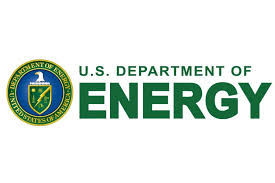Understanding the “10-Month Rule” Under the Bayh–Dole Act
- Dominique Haynes

- Oct 21
- 3 min read

In the world of federally funded research, managing invention disclosures and patent applications involves navigating lots of rules. One key deadline that often causes confusion is what’s commonly called the “10 Month Rule” under the Bayh-Dole Act and its implementing regulations. This blog explains what the rule is, why it matters, and how to comply (or avoid fallout from missing it).
What is the Bayh-Dole Act 10 Month Rule?
In simplest terms, when an institution (e.g., a university, nonprofit, or small business) receives a federal funding agreement and an invention arises under that agreement (a “subject invention”), the recipient must meet certain deadlines to retain title (ownership) of the invention. One such deadline pertains to filing a non-provisional patent application (or equivalent) if the recipient filed an initial provisional U.S. patent application.
Here are the key points:
Under the revised regulations (effective for awards and continuing awards after 14 May 2018) implementing Bayh–Dole (specifically 37 C.F.R. § 401.14 (c)(3)), when a contractor (i.e., funding recipient) files a provisional application as its initial US patent application for a subject invention, it must file a non-provisional application within 10 months of the provisional filing date.
The “10 month” clock thus begins at the priority date of the provisional application. If that deadline is missed, the government may request title to the invention (i.e., the recipient risks losing ownership).
There is an option to request an extension (in many cases automatically granted) that gives an additional one year from the 10-month deadline (so effectively up to 22 months from provisional filing) if timely requested and granted.
In short: if you file a provisional patent for a subject invention, you have 10 months to convert it to non-provisional (unless you’ve requested/obtained extension). If you don’t act, you risk losing your ownership rights under the funding agreement.
Why Was This Rule Introduced?
It might seem arbitrary at first glance, so let’s consider the background:
The Bayh–Dole Act — formally the Patent and Trademark Law Amendments Act of 1980 (35 U.S.C. § 200 et seq.) — allows universities, nonprofits and small businesses to retain title to subject inventions made under federally-funded research, rather than automatically assigning title to the federal government.
The implementing regulations (37 C.F.R. Part 401) set out the formal deadlines: for disclosure of invention to the agency, election of title, and filing of an initial patent application.
With the 2018 revision to the regulations (effective October 1, 2018 for many awards) the definition of “initial patent application” was updated to include a provisional U.S. national application filed under 37 C.F.R. 1.9(a)(2).
Because provisional applications can be filed (and then converted or followed) it left a gap: a provisional might be filed, but conversion to a non-provisional might delay too long — resulting in risk to the government’s interest. The 10-month rule ensures a timely decision by the recipient: either convert the provisional or notify the agency of intent to abandon/assign.
In effect, the rule is designed to protect the public (and the government’s) interest by avoiding indefinite “holding” of a provisional application without either moving the invention to a full application or relinquishing title.
Conclusion
The “10-Month Rule” under the Bayh–Dole Act is a critical deadline for institutions engaging in federally funded research. If a provisional U.S. patent application is filed as the initial application for a subject invention, the recipient must file a non-provisional within 10 months, or obtain a timely extension, or notify the funding agency of abandonment. Missing this obligation can jeopardize ownership rights, hinder commercialization efforts, and create risks for the institution and inventors.
For tech-transfer offices, research institutions, and companies dealing with federally funded inventions, the key takeaway is: trigger the timer, make the decision, and document the path forward well in advance of the deadline.
Ready to simplify your Bayh-Dole compliance?
Let’s make sure your inventions stay yours — not the government’s.



